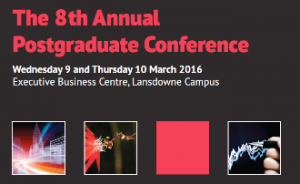 Only a week away… BU POSTGRADUATE CONFERENCE 9-10 MARCH 2016, hosted by the Graduate School on the 3rd Floor, Executive Business Centre, Lansdowne. With only a few tickets left, register to experience a jam packed programme of exciting postgraduate research, addresses from BU and external key academics, and share experiences with research and masters students from across the whole university…an opportunity not to be missed. For a copy of the programme and to register visit www.bournemouth.ac.uk/graduateschool.
Only a week away… BU POSTGRADUATE CONFERENCE 9-10 MARCH 2016, hosted by the Graduate School on the 3rd Floor, Executive Business Centre, Lansdowne. With only a few tickets left, register to experience a jam packed programme of exciting postgraduate research, addresses from BU and external key academics, and share experiences with research and masters students from across the whole university…an opportunity not to be missed. For a copy of the programme and to register visit www.bournemouth.ac.uk/graduateschool.
Category / PG research
This part of the blog features news and information for postgraduate research students and supervisors
Cloud and Weather Simulation for Computer Graphics
We would like to invite you to the next research seminar of the Creative Technology Research Centre.
Title: Cloud and Weather Simulation for Computer Graphics
Time: 2:00PM-3:00PM
Date: Wednesday 2nd March 2016
Room: P302, Poole House, Talbot Campus
Abstract:
In this talk I will discuss my work on cloud simulation for computer graphics. This work was designed to provide a means of simulating clouds and weather features, such as rain, using desktop graphics hardware. This involves elements of meteorology, numerical weather simulation and computational fluid dynamics, taken from the sciences and adapted to meet the more artistic requirements of computer graphics in which an element of control is required and the laws of physics may be wilfully disobeyed. The result is a lightweight physically-inspired cloud simulation scheme, capable of emulating the dynamic properties of cloud formation and weather effects.
We hope to see you there.
2016 BU PhD Studentship Competition – only 1 week left!
2016 BU PhD Studentship Competition
Call for submission of up to 20 matched funded Postgraduate Research Projects now OPEN
The Graduate School is delighted to announce the launch of the 2016 BU PhD Studentship Competition, with up to 20 matched funded projects available.
At this stage, Academic Staff are invited to submit proposals for studentship projects which, if successful, will be advertised to recruit PhD candidates for a September 2016 start.
Full details can be found on the Graduate School Staff Intranet where the following information can be found:
- BU Studentship Competition 2016 Policy
- Studentship Proposal Form
- Matched Funded PhD Studentships Flyer
Submission Deadline:
Applications should be submitted on the Studentship Proposal Form to the Graduate School via email to phdstudentshipcompetition@bournemouth.ac.uk no later than 9am on Monday 22 February 2016.
The Graduate School will manage the recruitment process along the following timetable:
| Date | Action |
| Wednesday 13 January 2016 | Launch PhD Studentships Internal Competition – development of proposals |
| Monday 22 February 2016 | Closing date for submission of proposals |
| Tuesday 15 March 2016 | Panel meeting |
| Late March 2016 | Feedback to supervisors and preparation of adverts |
| March – June 2016 | Launch PhD Studentships External Competition – recruitment of candidates |
| September 2016 | Successful Candidates start |
Social Science Seminar Series, Dr Sarah Collard, 17th Feb 16, 1-2pm.
All welcome to the February social science seminar series, Royal London House, Lansdowne Campus, R301, 13:00-14:00.
How do you exercise with epilepsy?Insights into the psychosocial impact of exercising with epilepsy
Abstract:
Research examining the connection between epilepsy and exercise has seen a surge in recent years, specifically examining the benefits to exercise on seizure control and overall well-being for a person with epilepsy. However, the barriers to exercise and methods of exercising currently employed by people with epilepsy have yet to be explored within depth. This presentation will provide a background to the psychosocial impact of exercising with epilepsy and what barriers stand in the way for people with epilepsy in feeling the benefits of exercise. Discussing findings from an exploratory qualitative study investigating possible barriers and coping strategies already in place for people with epilepsy in regards to their exercise life, this presentation will further our insight into the psychosocial impact of exercising with epilepsy as well as discuss how we might move this research forward in encouraging more people with epilepsy to exercise.
If you have further queries about the seminar series, please get in touch with Dr Mastoureh Fathi.
The use of technology to provide physical interaction experiences for cognitively able young people who have complex physical disabilities
We would like to invite you to the latest research seminar of the Creative Technology Research Centre.
Title: The use of technology to provide physical interaction experiences for cognitively able young people who have complex physical disabilities
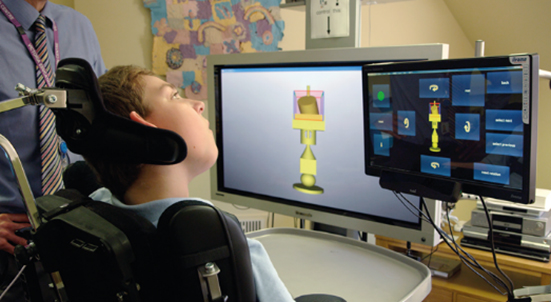 Speaker: Mark Moseley (a post graduate researcher from the Centre for Digital Entertainment (CDE) based in the Faculty of Media and Communication)
Speaker: Mark Moseley (a post graduate researcher from the Centre for Digital Entertainment (CDE) based in the Faculty of Media and Communication)
Time: 2:00PM-3:00PM
Date: Wednesday 17th February 2016
Room: P302 LT, Poole House, Talbot Campus
Abstract:
Young people who have severe physical disabilities and good cognition may face many barriers to learning, communication, personal development, physical interaction and play experiences. Physical interaction and play are known to be important components of child development, but this group currently has few suitable ways in which to achieve this.
Technology can help to facilitate such experiences. This research aims to develop a technology-based tool to provide this group with the potential for physical interaction and physical play, in order to develop their knowledge of spatial concepts. This tool will utilise eye-gaze technology, robotics and haptic feedback (artificial sensation).
This presentation will explain the rationale behind this research as well as the aims and approach used in the development of a proposed tool.
We hope to see you there.
3MP is almost here!
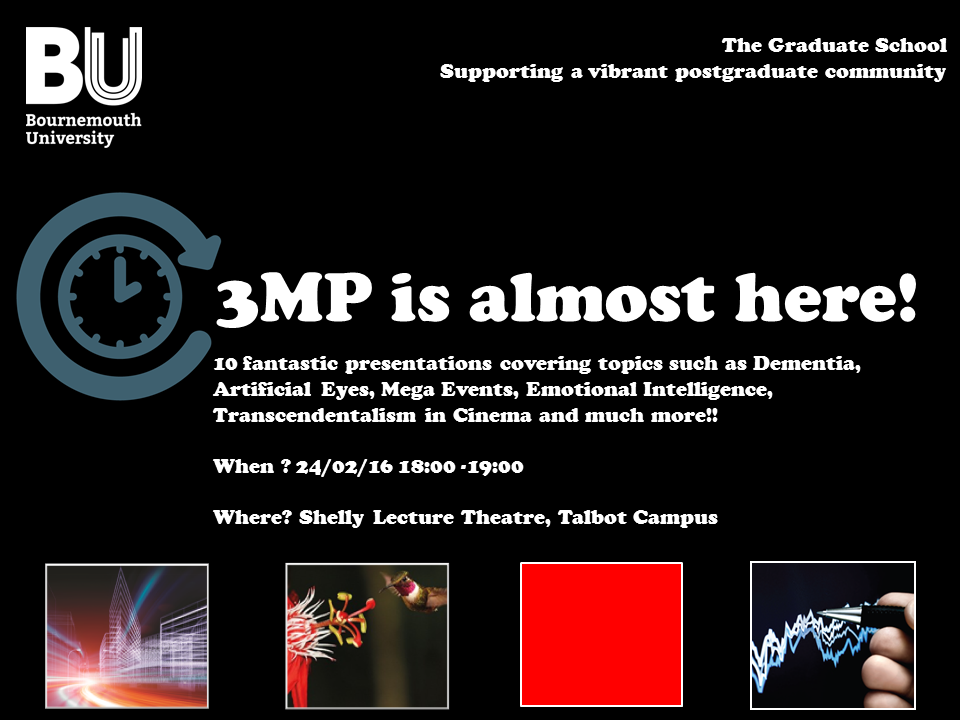
The contents of some research can be incredibly complicated and almost like another language to some of us who know nothing about a particular topic. The 3 minute presentation (3MP) breaks this mould by challenging PhD students to talk about their research in just 3 minutes.
Benefits of 3MP:
- Meet like-minded individuals & expand your network
- Expose yourself to new ideas
- Challenge the way you think
- An excuse to get away from the Lab/Library
- Celebrate being a BU PhD student and show your support for fellow colleagues
You’ll be surprised just how refreshing this event is and we have 10 very different presentations lined up for the evening!
The event is ticketed so please do book here: 3MP Ticket (staff are welcome to attend).
We hope to see you there!
Best wishes
The Graduate School team
The Graduate School in the Netherlands
Professor Tiantian Zhang attended the 9th EUA Council for Doctoral Education (CDE) in the Netherlands on the 20th – 21st January, 2016. The EUA CDE is dedicated to improving and developing doctoral education. This event was attended by approximately 110 international delegates who represented numerous Universities from across Europe. Representing the Graduate School from Bournemouth University, Professor Zhang was able to network and develop international contacts with other Universiti es. This was a wonderful opportunity for a representative from BU to learn and exchange good practices with others who are dedicated to enhancing the Doctoral Education experience.
es. This was a wonderful opportunity for a representative from BU to learn and exchange good practices with others who are dedicated to enhancing the Doctoral Education experience.
Pizza, Planning and Postgraduate Research
The Graduate School would like to welcome 310 new students to BU. Over four days last week, we welcomed these students through a series of inductions. This included 40 new PhD, 15 MRes, 235 Masters and 20 exchange students. The four days cov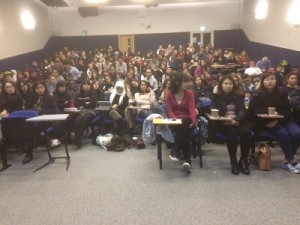 ered a huge amount of information including how to plan and prepare for your studies, research and what to expect as a student at BU. In order to help some of the students relax after these busy first few days, the Graduate School invited the PhD and MRes students for pizza and refreshments at Dylan’s Kitchen and Bar. Some students even got involved with a bit of karaoke, although I don’t think there were any Mariah Carey’s amongst us.
ered a huge amount of information including how to plan and prepare for your studies, research and what to expect as a student at BU. In order to help some of the students relax after these busy first few days, the Graduate School invited the PhD and MRes students for pizza and refreshments at Dylan’s Kitchen and Bar. Some students even got involved with a bit of karaoke, although I don’t think there were any Mariah Carey’s amongst us.
To find out more about the Graduate School and what we offer, find us on the BU website under postgraduate research. Also, keep your eyes open for the 8th Annual Postgraduate Conference taking place in March 2016.
Systematic Review Masterclass – 15-16 February 2016
A reminder that this two-day Systematic Review Masterclass will be taking place at the Executive Business Centre, Holdenhurst Road on 15 & 16 February.
One way of collating and assessing the best possible evidence is through a method called ‘systematic reviewing’. Systematic reviewing is a specific research method whereby a structured, rigorous, and objective approach is used to provide a critical synthesis of the available evidence on a particular topic. This masterclass will examine the rationale for systematic reviews and take participants through the various elements of a systematic review: selecting (electronic) databases; literature searching; data extraction; data synthesis; interpretation and reporting.
Booking price and information: The fee of £200 for this masterclass includes two full days with the course facilitators, all refreshments and all class materials. Accomodation and travel costs are not included.
Book your place now at http://www.eventbrite.co.uk/e/masterclass-systematic-review-2016-tickets-18954206542 . Places must be booked by 1 February 2016.
For further information please contact: Tel: 01202 962184 or email: epegrum@bournemouth.ac.uk
Presentation by PhD student Preeti Mahato Jan 27th.
On Wednesday Jan. 27th CMMPH PhD student Preeti Mahato will present her PhD research ideas under the title “Addressing quality of care and equity of services available at birthing centres to improve maternal and neonatal health in western Nepal.” Her presentation will be held at the Lansdowne Campus at 13.00 in room 301 in Royal London House.
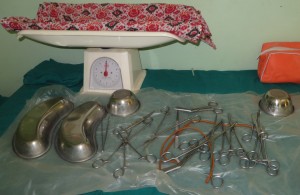 Preeti’s research focuses on birthing centres in western Nepal; and quality and equity of service available at these facilities. In Nepal, birthing centres act as first contact point for the women seeking maternity services especially the basic obstetric care. The focus of this presentation will be to talk about the first review article Preeti Mahato wrote for the ‘Journal of Asian Midwives’ entitled “Birthing centres in Nepal: Recent development, obstacles and opportunities”. The article has been accepted for publication in June 2016 and focuses on introducing birthing centres, their current state of operation under the health system of Nepal, barriers they are facing and what could be done to improve their present state. The quality of care issue available at birthing centre is emphasised, since the number of these facilities are increasing however there is a growing trend to bypass and uptake services at hospitals. Despite barriers to utilisation of services at birthing centres, they can play an important role in increasing institutional delivery rate and proportion of births benefiting from a skilled birth attendant.
Preeti’s research focuses on birthing centres in western Nepal; and quality and equity of service available at these facilities. In Nepal, birthing centres act as first contact point for the women seeking maternity services especially the basic obstetric care. The focus of this presentation will be to talk about the first review article Preeti Mahato wrote for the ‘Journal of Asian Midwives’ entitled “Birthing centres in Nepal: Recent development, obstacles and opportunities”. The article has been accepted for publication in June 2016 and focuses on introducing birthing centres, their current state of operation under the health system of Nepal, barriers they are facing and what could be done to improve their present state. The quality of care issue available at birthing centre is emphasised, since the number of these facilities are increasing however there is a growing trend to bypass and uptake services at hospitals. Despite barriers to utilisation of services at birthing centres, they can play an important role in increasing institutional delivery rate and proportion of births benefiting from a skilled birth attendant.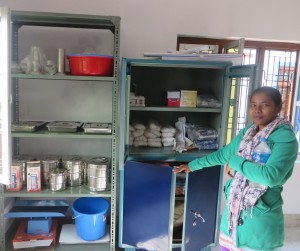
The second part of presentation will provide a brief summary on what Preeti has done since writing a review article, as she has worked on a systematic review on quality of basic obstetric care facilities in low and middle income countries.
Preeti Mahato has worked in the field of public health in Nepal for three years after completing her Master of Public Health. She has an interest in sexual and reproductive health, women’s health and maternal and child health. Working as a public health officer she was involved in maternal and neonatal health that developed her interest in pursuing a doctorate related to maternal and neonatal health. Part of her work in Nepal also included monitoring and supervision of birthing centres in rural areas of Nepal and that is how she became motivated to start a PhD at BU.
Prof. Edwin van Teijlingen
CMMPH
“Performative Social Science: What it is, What it isn’t, and What it has become”, Talk by Dr Kip Jones, Wed, 20th January 2016, Royal London House, R301, 1-2 pm
All staff and students welcome. Please feel free to bring your lunch.
Abstract:
“Performative Social Science” was a term first coined by Norman Denzin in 2001, the year that Kip Jones received his PhD and began to explore new ways to communicate Social Science findings to wider audiences.
What is Performative Social Science (PSS) then, Art or Science? It isn’t one or the other. It is enriching the ways in which Social Science subjects might be researched and/or findings disseminated or communicated to various communities. Ideally, audiences should be almost unaware of the seams where practitioners have cobbled together in-depth, substantial scholarship with artistic endeavor. PSS is defined as the use of tools from the Arts or Humanities in investigating and/or disseminating Social Science research.
The Seminar will explore Jones’ journey from early productions produced on his PC in his bedsit, to gatherings (physical and virtual) of like-minded academics (Illustrated above), to the production of a major short film based in solid qualitative research methods including auto-ethnography, and back again to ‘kitchen sink’ work, producing creative productions which inform his future efforts.
***
If you have any queries, please get in touch with seminar series coordinator Dr Mastoureh Fathi, mfathi@bournemouth.ac.uk
2016 BU PhD Studentship Competition
2016 BU PhD Studentship Competition
Call for submission of up to 20 matched funded Postgraduate Research Projects now OPEN
The Graduate School is delighted to announce the launch of the 2016 BU PhD Studentship Competition, with up to 20 matched funded projects available.
At this stage, Academic Staff are invited to submit proposals for studentship projects which, if successful, will be advertised to recruit PhD candidates for a September 2016 start.
Full details can be found on the Graduate School Staff Intranet where the following information can be found:
- BU Studentship Competition 2016 Policy
- Studentship Proposal Form
- Matched Funded PhD Studentships Flyer
Submission Deadline:
Applications should be submitted on the Studentship Proposal Form to the Graduate School via email to phdstudentshipcompetition@bournemouth.ac.uk no later than 9am on Monday 22 February 2016.
The Graduate School will manage the recruitment process along the following timetable:
| Date | Action |
| Wednesday 13 January 2016 | Launch PhD Studentships Internal Competition – development of proposals |
| Monday 22 February 2016 | Closing date for submission of proposals |
| Tuesday 15 March 2016 | Panel meeting |
| Late March 2016 | Feedback to supervisors and preparation of adverts |
| March – June 2016 | Launch PhD Studentships External Competition – recruitment of candidates |
| September 2016 | Successful Candidates start |
Human Body Decomposition in CGI: Simulating Livor Mortis
We would like to invite you to the latest research seminar of the Creative Technology Research Centre.
Speaker: Dhana Frerichs
Title: Human Body Decomposition in CGI: Simulating Livor Mortis
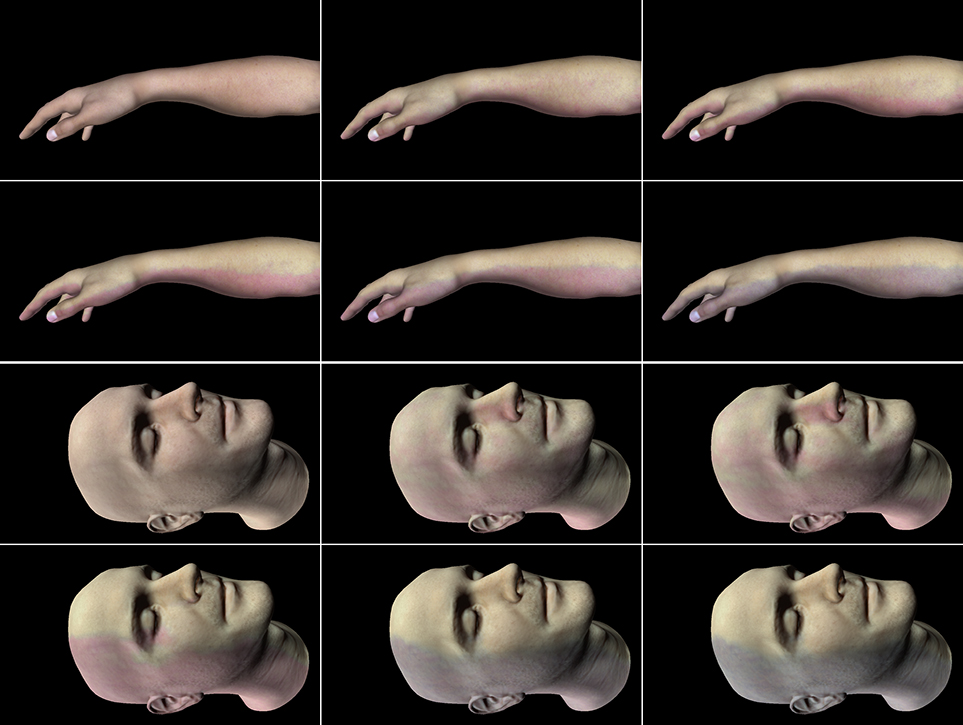
Time: 2:00PM-3:00PM
Date: Wednesday 20th January 2016
Room: P302 LT, Poole House, Talbot Campus
Abstract:
Creating realistic looking scenes is an important goal in computer graphics. In particular, in the real-time games industry, one can observe an increasing trend towards realism. Despite this, ageing effects, such as rotting, are often neglected. This is particularly noticeable in the way corpses are depicted in game worlds, which show no signs of decay and tend to simply disappear from the world after a while. We aim to simulate these post-mortem appearance changes.
There are a number of different processes that affect a body’s appearance after death. In this talk we concentrate on the simulation of skin discolouration after death caused by blood pooling, which is referred to as livor mortis. The skin colour is affected by the red chromophore haemoglobin that is found in red blood cells, and the brown chromophore melanin, found in the outer skin layer. The skin discoloration is due to the changes in the haemoglobin concentration and oxygen saturation in the body. Our approach consists of a simulation of post mortem blood dynamics in a volumetric mesh and a layered skin shader that is controlled by the haemoglobin and oxygen levels in blood.
We hope to see you there.
You can boil an egg in three minutes but can you….
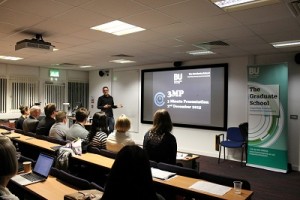 Present your research in three minutes? On the 2nd December, 2015 nine Post Graduate students took the 3 minute presentation (3MP) challenge and presented their research in three minutes with an audience of 50 delegates from around BU. This event was extremely successful and received positive feedback from both academics and students. If you would like the opportunity to share your research, practice your presentation skills, network and get up to date information on the latest research being conducted at BU you should take the 3MP challenge http://blogs.bournemouth.ac.uk/research/2015/12/08/the-3-minute-presentation-3mp-is-back-for-february/.
Present your research in three minutes? On the 2nd December, 2015 nine Post Graduate students took the 3 minute presentation (3MP) challenge and presented their research in three minutes with an audience of 50 delegates from around BU. This event was extremely successful and received positive feedback from both academics and students. If you would like the opportunity to share your research, practice your presentation skills, network and get up to date information on the latest research being conducted at BU you should take the 3MP challenge http://blogs.bournemouth.ac.uk/research/2015/12/08/the-3-minute-presentation-3mp-is-back-for-february/.
Also, keep your eyes open for the 8th Annual Post Graduate Conference taking place in March 2016. To find out more about the Graduate School and what we offer, find us on the BU website under postgraduate research.
Editorial Journal of Asian Midwives
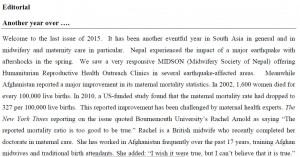 BU student Rachel Arnold was mentioned in the end-of-year editorial of the Asian Journal of Midwives. Rachel Arnold has conducted her PhD research in the Centre for Midwifery, Maternal and Perinatal Health (CMMPH) on midwifery and maternity care provided in a hospital in Afghanistan. Her first PhD research work was published in the prestigious medical journal BJOG [1]. Moreover, she was very recently quoted on Afghan maternal mortality data in one of the best-known newspapers globally, namely in The New York Times [2].
BU student Rachel Arnold was mentioned in the end-of-year editorial of the Asian Journal of Midwives. Rachel Arnold has conducted her PhD research in the Centre for Midwifery, Maternal and Perinatal Health (CMMPH) on midwifery and maternity care provided in a hospital in Afghanistan. Her first PhD research work was published in the prestigious medical journal BJOG [1]. Moreover, she was very recently quoted on Afghan maternal mortality data in one of the best-known newspapers globally, namely in The New York Times [2].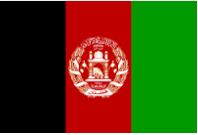
Prof. Edwin van Teijlingen
CMMPH
References:
- Arnold, R., van Teijlingen, E.R., Ryan, K., Holloway, I. (2015) Understanding Afghan health care providers: A qualitative study of the culture of care in a Kabul maternity hospital, BJOG 122: 260-267.
- Nordland. R. (2015) ‘Reported Gains in Afghan Maternal Health Are Found to Be Implausible’ The New York Times Dec 4th, 2015. Available from: http://www.nytimes.com/2015/12/05/world/asia/afghanistan-maternal-mortality-rate.html
Field visit to birthing centre in rural Nepal
Today, as part of several related maternity-care studies, one of Bournemouth University’s (BU) researchers visited a rural birthing centre in Nawalparasi. The first photo is the view from the birthing centre showing exactly how rural it is. This particular birthing centre is based close to the Indian border. It has been supported for over a year by Green Tara Nepal, an organisation which works closely  with BU on a range of health and maternity-care projects. The birthing centre has been improved since our last visit one year ago. There now is a newly build decomposition pit for the disposal of placentas. There is a new postnatal recovery room, and the number of local women giving birth in the facility has been increasing! When we arrived a new baby had just been born an hour or so earlier (second photo with proud father on the right).
with BU on a range of health and maternity-care projects. The birthing centre has been improved since our last visit one year ago. There now is a newly build decomposition pit for the disposal of placentas. There is a new postnatal recovery room, and the number of local women giving birth in the facility has been increasing! When we arrived a new baby had just been born an hour or so earlier (second photo with proud father on the right).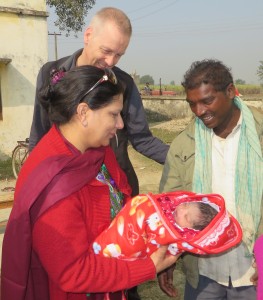
This and several neighbouring birthing centres are the focus of a PhD study by FHSS’s Preeti Mahato. She recently co-authored an editorial in Nepal Journal of Epidemiology on the role of birthing centres in post-earthquake Nepal [1]. Her PhD is supervised by Dr. Catherine Angell, Prof. Padam Simkhada, based at Liverpool John Moores University (LJMU) and who is also Visiting Faculty at BU, and Prof. Edwin van Teijlingen.
The birthing centre also lies in the area where the charity Green Tara Nepal has been supporting groups for pregnant women and their mothers-in-law. The latter is an important group as they are still key decision-makers on maternity care questions related to their daughters-in-law [2]. The birthing centre is part of a wider intervention to improve the uptake of antenatal and postnatal care and skilled attendance at delivery. BU has been involved in evaluating this intervention with Green Tara Trust (UK) and LJMU for nearly a decade.
Some of the birthing centre staff will attend the mental health and maternity care training organised next week [3]. This training project is run by a consortium of BU, LJMU, and Tribhuvan University (the oldest university in Nepal). This mental health and maternity care project is supported by the Tropical Health & Education Trust (THET) as part of the Health Partnership Scheme, which is funded by the UK Department for International Development (DFID), and in the field our THET project is supported by Green Tara Nepal.
Prof. Edwin van Teijlingen
CMMPH
References:
- Mahato, P.K., Regmi, P.R., van Teijlingen, E., Simkhada, P., Angell, C., Sathian, B. (2015) Birthing centre infrastructure in Nepal post 2015 earthquake. Nepal Journal of Epidemiology 5(4): 518-519. http://www.nepjol.info/index.php/NJE/article/view/14260/11579
- Simkhada, B., Porter, M., van Teijlingen, E. (2010) The role of mothers-in-law in antenatal care decision-making in Nepal: A qualitative study. BMC Pregnancy & Childbirth 10(34) biomedcentral.com/content/pdf/1471-2393-10-34.pdf
- van Teijlingen, E., Simkhada, P., Devkota, B., Fanning, P., Ireland, J., Simkhada, B., Sherchan, L., Silwal, R.C., Pradhan, S., Maharjan, S.K., Maharjan, R.K. (2015) Mental health issues in pregnant women in Nepal. Nepal Journal of Epidemiology 5(3): 499-501. http://www.nepjol.info/index.php/NJE/article/view/13607/11007
First CMMPH editorials of 2016
Happy New Year and a healthy and successful 2016. I have the pleasure to announce the first two editorials published this year by CMMPH staff and students. Although I am slightly cheating as the editorials were really published yesterday on the very last day of 2015 in the latest edition of the Nepal Journal of Epidemiology. In my defence I didn’t have access to the internet here in Nepal until this afternoon.

The first of the two editorials focuses on small-scale community birth centres in post-earthquake Nepal [1]. The lead author of this editorial our CMMPH PhD student Preeti Mahata and all her co-authors are affiliated with BU. Dr. Pramod Regmi, Dr. Catherine Angell and Prof. Edwin van Teijlingen are FHSS staff and Prof. Padam Simkhada and Dr. Brijesh Sathian are both BU Visiting Faculty. Preeti Mahato is conducting her PhD research on birthing centres in Nawalparasi, in the south of Nepal, in an area bordering India.
The second editorial looks at ‘health’ in the recently announced new Constitution of the Federal Republic of Nepal [2]. The concept of health as a human right seems to us quite central in the Nepalese Constitution, considerably more so than in the Constitutions of the USA or the Netherlands, for example. Four of the five authors of this editorial are affiliated with BU, whilst Dr.Puspa Pant is based at the Centre for Child and Adolescent Health, at the University of the West of England.
The Nepal Journal of Epidemiology is Gold Open Access hence both editorials are freely available to everyone.
Prof. Edwin van Teijlingen
CMMPH
References:
- Mahato, P.K., Regmi, P.R., van Teijlingen, E., Simkhada, P., Angell, C., Sathian, B. (2015) Birthing centre infrastructure in Nepal post 2015 earthquake. Nepal Journal of Epidemiology 5(4): 518-519. http://www.nepjol.info/index.php/NJE/article/view/14260/11579
- Simkhada, P., Regmi, P.R., Pant, P.R., van Teijlingen, E., Sathian, B. (2015) Stipulating citizens’ fundamental right to healthcare: Inference from the Constitution of Federal Republic of Nepal 2015. Nepal Journal of Epidemiology 5(4); 516-517. http://www.nepjol.info/index.php/NJE/article/view/14257/11576
New paper by BU PhD student Preeti Mahato
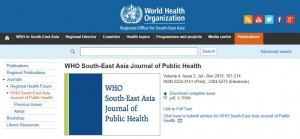
Today saw the publication of an academic paper in the World Health Organization’s WHO South-East Asia Journal of Public Health by FHSS’s PhD student Mrs Preeti Mahato. The paper ‘Access to free health-care services for the poor in tertiary hospitals of western Nepal: a descriptive study’ [1] based on work conducted prior to commencing her PhD thesis in the Centre for Midwifery, Maternal and Perinal Health (CMMPH). The journal is Open Access and the paper is freely available across the globe, to access online manuscript click here!
Congratulations!
Prof. Edwin van Teijlingen
CMMPH
Reference:
- Mahato,P.K, Paudel, G.S. (2015) Access to free health-care services for the poor in tertiary hospitals of western Nepal: a descriptive study. WHO South-East Asia Journal of Public Health 4(2): 167–175.
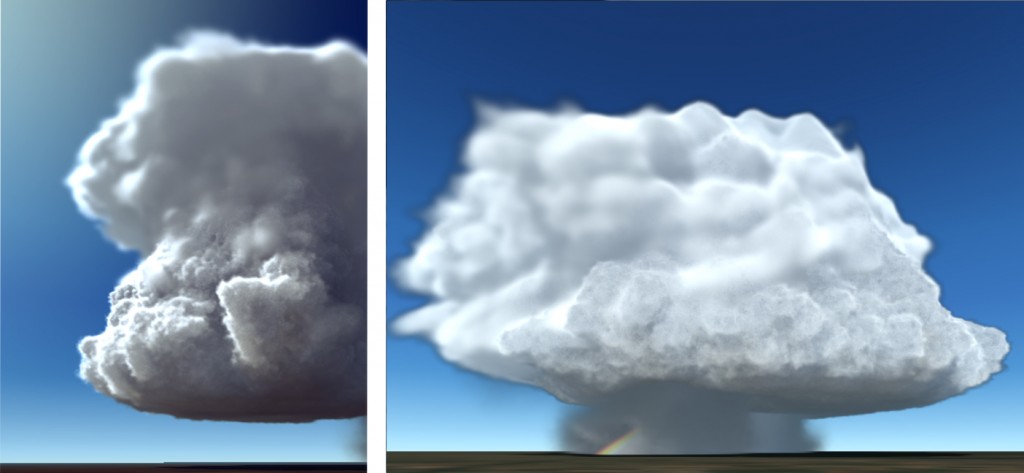











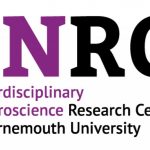 Fourth INRC Symposium: From Clinical Applications to Neuro-Inspired Computation
Fourth INRC Symposium: From Clinical Applications to Neuro-Inspired Computation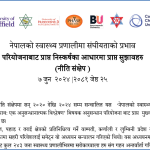 Writing policy briefs
Writing policy briefs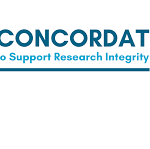 Upholding Excellence: The Concordat to Support Research Integrity
Upholding Excellence: The Concordat to Support Research Integrity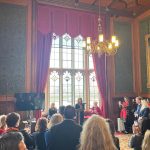 Today’s Documentation Will Serve Tomorrow’s Justice
Today’s Documentation Will Serve Tomorrow’s Justice Up2U: New BU academic publication
Up2U: New BU academic publication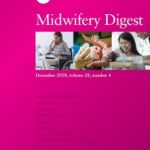 New BU midwifery paper
New BU midwifery paper ECR Funding Open Call: Research Culture & Community Grant – Application Deadline Friday 12 December
ECR Funding Open Call: Research Culture & Community Grant – Application Deadline Friday 12 December MSCA Postdoctoral Fellowships 2025 Call
MSCA Postdoctoral Fellowships 2025 Call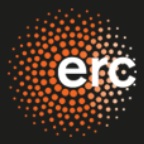 ERC Advanced Grant 2025 Webinar
ERC Advanced Grant 2025 Webinar Horizon Europe Work Programme 2025 Published
Horizon Europe Work Programme 2025 Published Horizon Europe 2025 Work Programme pre-Published
Horizon Europe 2025 Work Programme pre-Published Update on UKRO services
Update on UKRO services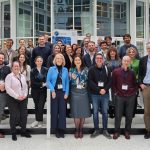 European research project exploring use of ‘virtual twins’ to better manage metabolic associated fatty liver disease
European research project exploring use of ‘virtual twins’ to better manage metabolic associated fatty liver disease